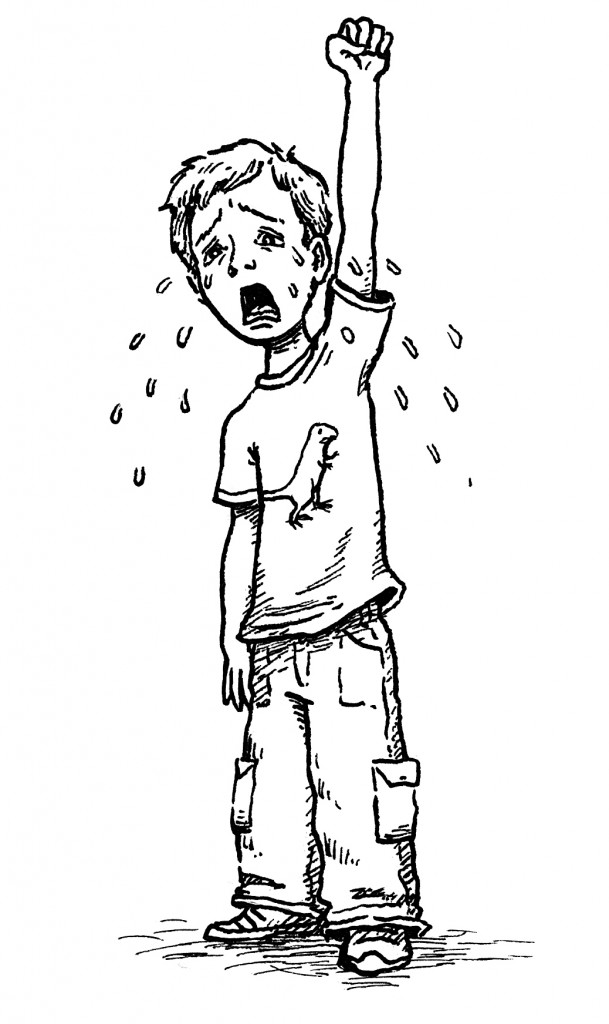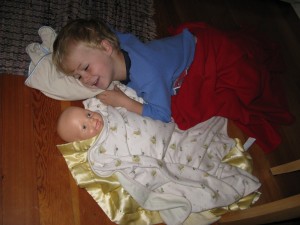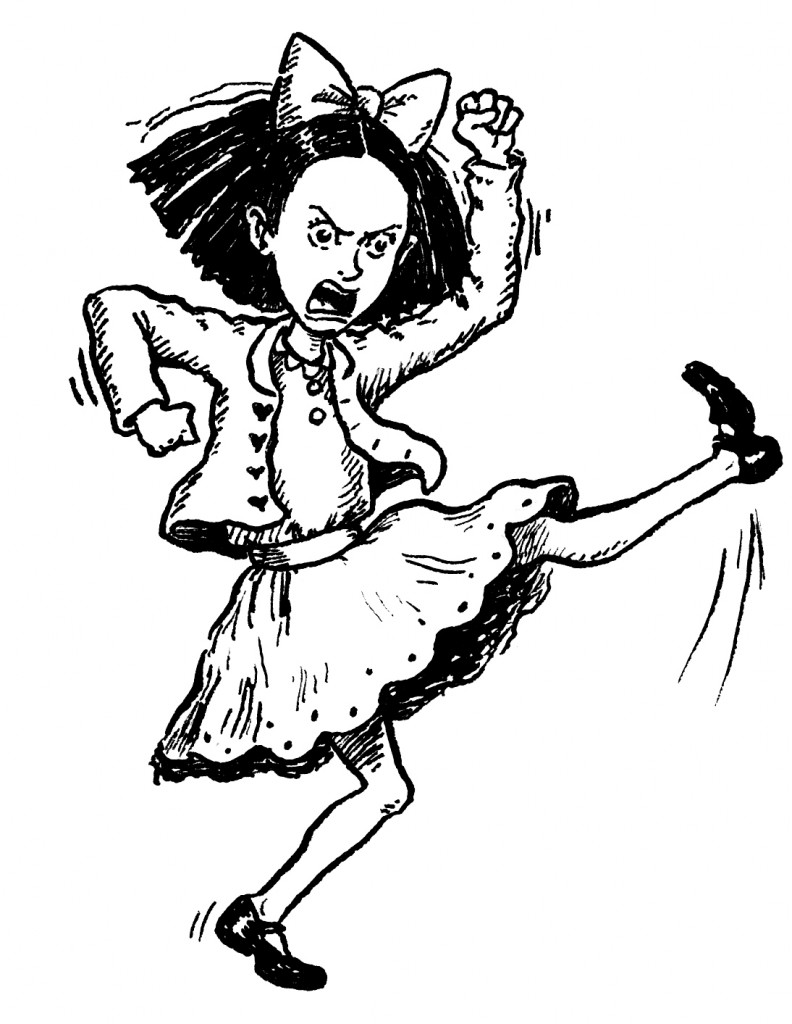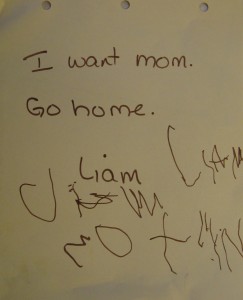A World of Books and Children
Search and enjoy 8 years of posts chock-filled with ideas from It’s OK Not to Share and beyond.
Kids don't learn about peace by singing about it. Kids learn peace skills by having problems.
My mentor Jan Waters taught me that. Kids also don't learn peace skills by coloring "Friends" handouts or by signing their names at the bottom of school "no bullying policy" forms. It's more complicated than that. Learning strong social and communication skills is a process. It involves boundary setting, empathy, courage, problem-solving, emotional acceptance and positive assertiveness.
Simply put, peace takes practice. It's conflict that gives kids the opportunity to practice.
Sometimes we focus our efforts on preventing conflicts from happening. But kids desperately need to encounter meaningful conflicts during their day. (Ex: he's got the green marble - I want it!). Here's why your child benefits from conflict:
Face conflicts directly Teaching children conflict mediation means they understand they have to speak directly to the person they have the problem with. Hollering "mom!" or "teacher!" isn't going to solve their problem. A supportive adult can be by their side to offer guidance and moral support, but kids need to learn early on that they must face the other child directly. That's the beginning of solving conflicts.
Cope with negative emotions Conflicts bring out rage, jealousy, frustration, sorrow, all sorts of negative, hard-to-take emotions. That's what's so wonderful. Children need practice understanding and processing these difficult emotions. Knowing how to express anger appropriately is an enormous life lesson for every one us.
See things from another perspective The process of conflict mediation involves deep listening. What does the other person think happened? Could there be another point of view? The ability to see things from another perspective ("I didn't like it when you knocked over my tower.") is part of how moral development unfolds.
Make courage a habit Dealing with conflicts instead of dodging them can become a habit, especially if we start young. Face it, speaking up and expressing the wrong you feel can take a lot of courage. Practicing this courage regularly makes it easier.
Know when to speak up This is a fundamental part of learning about conflict. Recognizing when we feel wronged, hurt, slighted or simply icky about something. "Did you like what she did? No? Well, tell her!" Kids need conflict to understand when they don't like something and when to speak up and put a stop to someone else's behavior. Kids who feel confident about speaking up when they don't like something are also more apt to speak up on behalf of a friend.
Peace isn't the absence of conflict. Peace is the respectful resolution of conflict.
Conflicts are part of the daily life of being human. So the next time a conflict comes up, do your best to view it as an opportunity. An opportunity to practice peace skills, the important work of conflict mediation.
Want more about risk, conflict, guiding better communication skills and developing self-confidence? Join this free international telesummit on raising strong kids. Starts Monday, October 21. Register now so you don't miss it.
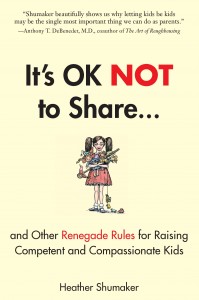 Unsure how to go about guiding your child? Ideas for expressing wild emotions and Ten steps for Conflict Mediation for Kids are just part of the book It's OK NOT to Share.
Unsure how to go about guiding your child? Ideas for expressing wild emotions and Ten steps for Conflict Mediation for Kids are just part of the book It's OK NOT to Share.
Are you a conflict dodger or a conflict welcomer? Do you think it would have been easier if you had experienced plentiful conflict mediation practice as a child?
My kids got to bed too late last night. Sure, it was 7:30pm and 8:50pm, but that's too late to meet their sleep needs. Even half an hour of sleep deprivation makes a huge difference for children's learning, memory, behavior and happiness.
This got me thinking about what we routinely deprive our children of. What's missing in their lives. What's truly important that we need to make more time for in family life.
Lack of Nature
Nature is the best, oldest and most imaginative toy - the possibilities to play with mud, sticks, trees, boulders and pine cones are endless. We all need to connect to the earth in order to be fully human and to care about life on our planet. When a child is emotionally wound up, taking him outside can bring relief. There's something about being outside. If you live near a park or can find a tree, the benefits ratchet up even more. Medical research backs this up - in Japan they've studied the marvelous difference walking in the forest can do to decrease stress and improve health. They call it "forest-bathing."
Lack of Sleep
Our children are sleep deprived. With early work schedules -- getting kids to before-school-care at 6am -- or even early school bus times, kids ages 4 and older are consistently up too early. And they stay up too late. Some children do not even have bedtimes. Yet kids need enormous amounts of sleep. How much? For preschoolers it's 11-13 hours (including naps) and for school-age kids it's 10-11 hours. For most kids, that means bedtime at 7pm or 8pm. (see The Sleep Foundation)
Achievement-driven America often considers sleep a waste of time, but shortage of sleep harms learning, memory, focus, problem-solving, the immune system and, of course, emotional stability. My friend who's a high school teacher routinely assigns sleep as homework to her students, especially before a test. Those who go to bed earlier (and don't study) get better scores.
Lack of Downtime
Play, staring into space and goofing around are essential. Learning, creativity, imagination, problem-solving, persistence, empathy - all these good things come when kids pursue their own play ideas. While we rush to fill out children's days with "enrichment" activities, we need to remember the enriching ideas already inside our children's minds. Give them respect: time and space to flourish. (Benefits of play article)
The mind is not a vessel to be filled, but a fire to be kindled. - Plutarch
We can kindle it best with nature, sleep and play.
What would you add to this list? How are you doing on getting enough of these three things for your child and yourself? What could you change?
Effective parenting is often counterintuitive. My favorite time to teach early literacy is when a child is wailing or hopping mad.
Sounds crazy, no? The idea of grabbing a pen and paper when a child is screaming, kicking their heels, or simply crying because they miss mommy does seem odd at first. Try it. Writing down a child's feelings is one of the most effective ways to quickly end the tears.
Writing messages works for the pre-literate child. You can start as young as age two.
What to do
Write a letter to the person your child is missing or mad at. If your child's mad at you, go ahead and write the letter to yourself. You might have to start out: "Let's say: Dear Mommy, I'm mad!" but after that, take dictation from your child. She will tell you how she feels. "I feel so mad I could throw a house at you!" Write down their exact words and read aloud what you've written together. Chances are, she will quickly memorize it. Let her choose where to put the finished letter (a "mailbox" or pinning it to her door, etc.). Give her the pen and let her "write" her name at the end. Don't worry if it's scribbles. It's the action that counts.
Writing dictated notes during times of high emotion works wonders precisely because the child is feeling listened to and understood. The key is not to give in, (not to give her that extra cookie) but to help her express her intense feelings. Once the feelings are out, tears typically dry up.
Writing it down on paper also gives the child something tangible to look out. She may not be able to read yet, but she can see it. She knows exactly what it says. She can hold and touch it. What's more, your child just gained an incredible interest in reading/ writing. She recognizes how powerful the written word can be: it can capture her deepest feelings. That's meaningful literacy. Going straight to the child's heart.
Even a screaming, kicking child will get interested in what you're doing. Speak aloud and do your best to capture her feelings. That gets the child's attention. She will stop screaming, come over and help you get the right words. After that, the tantrum's usually over.
Tips for starting out
- Let's write that down!
- Let's write how you feel in a letter.
- What should we say? How about: "Dear Dad, Caleb is mad. He's so mad he feels like kicking..."
- You want your mom right now. Let's tell her how you feel.
- Your letter won't bring your mom here, but it will tell her how you're feeling.
- Here's a picture of your face crying. See the tears?
 Using dictated letters is just one of the 29 "renegade rules" in the book It’s OK Not to Share…And Other Renegade Rules for Raising Competent and Compassionate Kids. Learn more at heathershumaker.com or watch this short video on writing dictated letters.
Using dictated letters is just one of the 29 "renegade rules" in the book It’s OK Not to Share…And Other Renegade Rules for Raising Competent and Compassionate Kids. Learn more at heathershumaker.com or watch this short video on writing dictated letters.
Have you ever tried writing a note with a young child? How did it go? What other tools do you use to help kids express their emotions?

